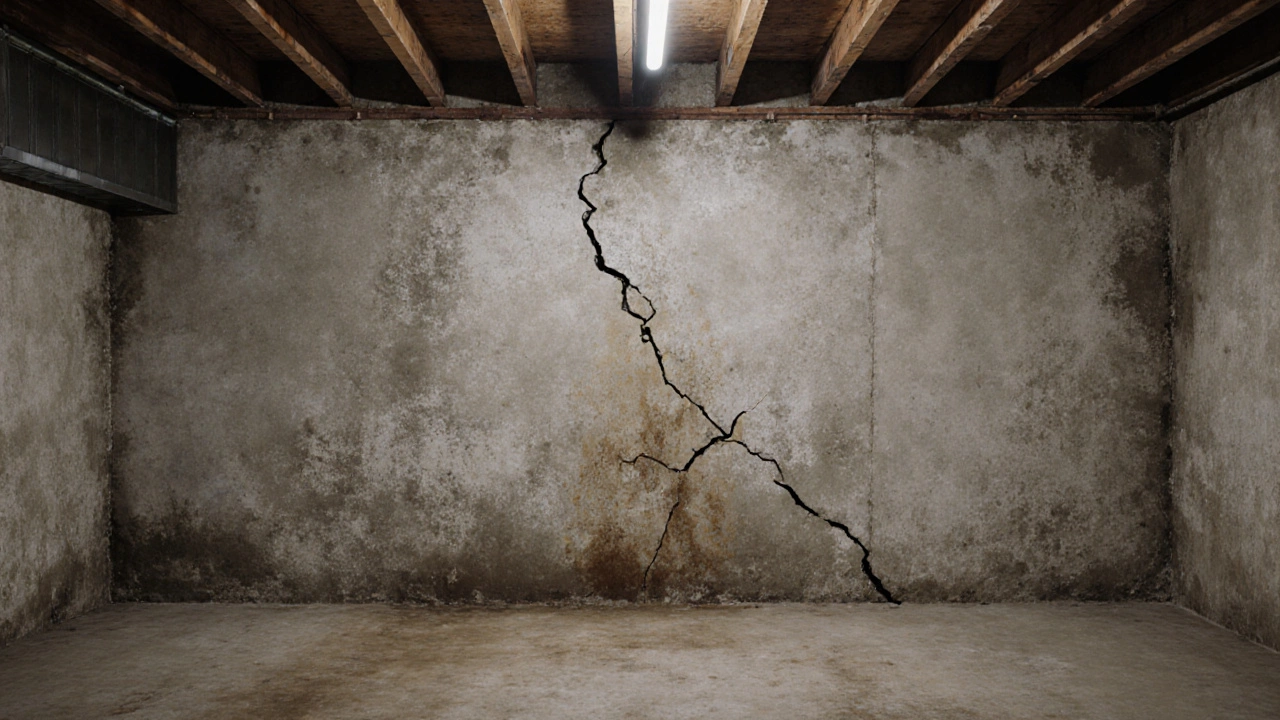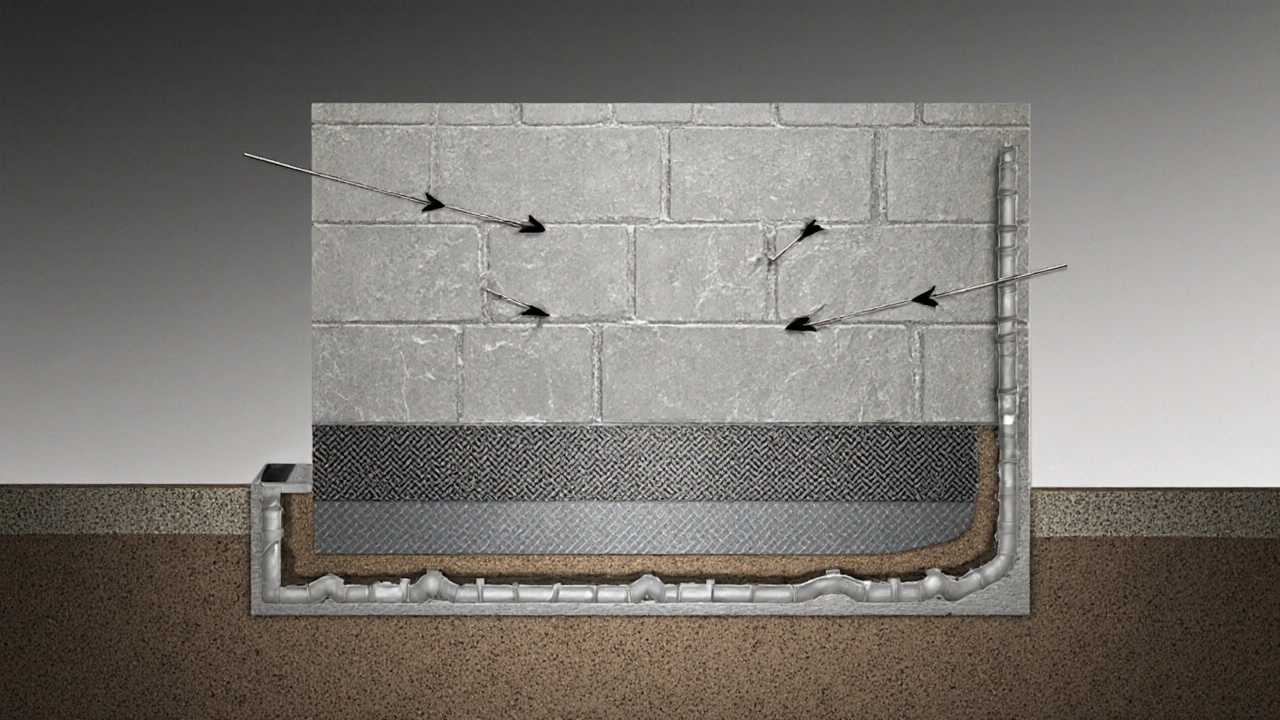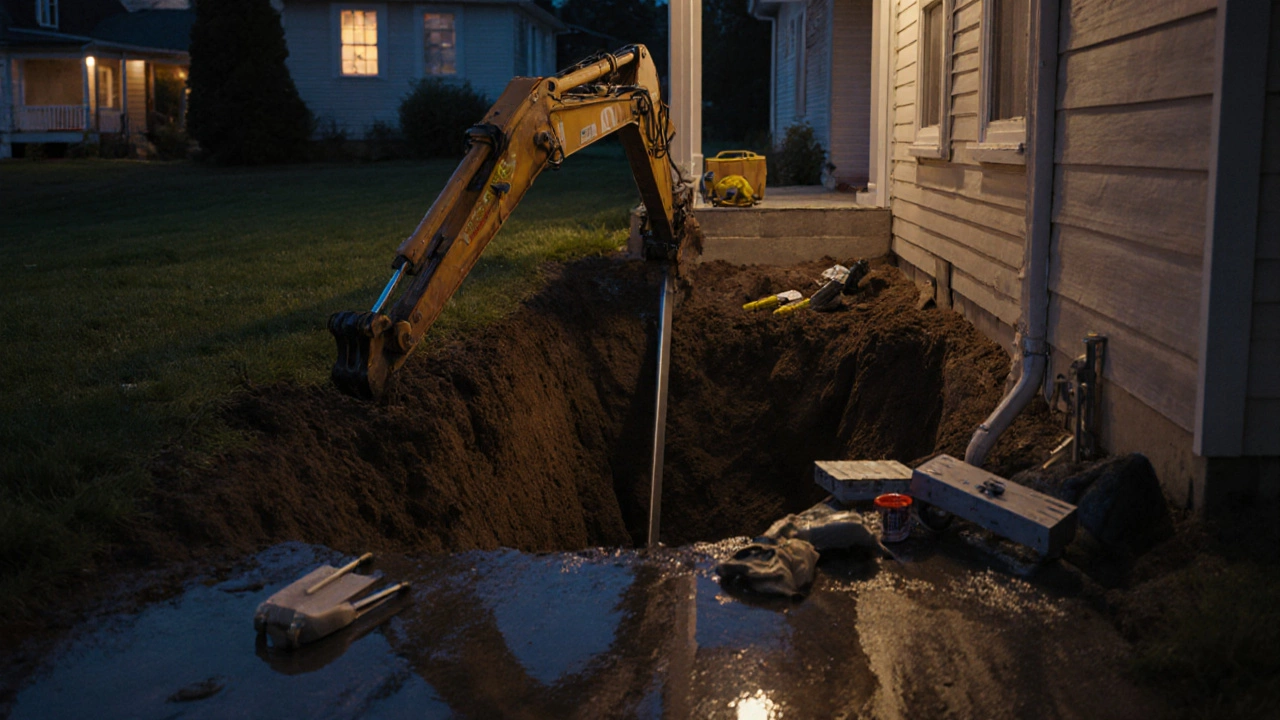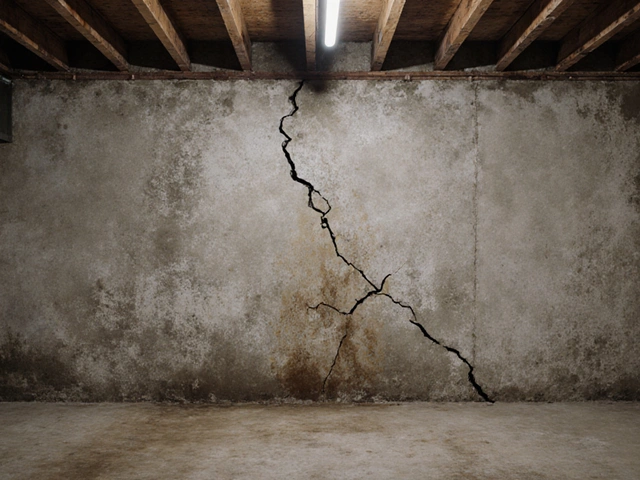How Much Does It Cost to Repair a Horizontal Foundation Crack?

Foundation Crack Repair Cost Calculator
Estimate Your Repair Cost
Estimated Repair Cost
This is an estimate based on your inputs. Actual costs may vary depending on your location, contractor, and specific conditions. Professional assessments are recommended.
Seeing a horizontal crack in your foundation isn’t just a visual concern-it’s a warning sign that something serious is happening beneath your home. Unlike vertical cracks, which often come from normal settling, horizontal cracks usually mean your foundation is under pressure from outside soil, water, or shifting ground. And if left untreated, they can lead to wall failure, uneven floors, or even structural collapse. The big question isn’t just whether you need to fix it-it’s how much it will cost, and whether you can trust a quick fix.
Why Horizontal Cracks Are Different
Not all foundation cracks are the same. Vertical cracks are thin, often hairline, and appear as the concrete dries and shrinks. They’re common in newer homes and rarely threaten structural integrity. Horizontal cracks, on the other hand, run side to side across the wall. They’re usually wider, sometimes more than 1/4 inch, and often show signs of bowing or leaning. These cracks form because of lateral pressure-usually from waterlogged soil pushing against the wall. Clay soils, heavy rains, poor drainage, or even tree roots can cause this pressure to build up over time.According to the American Society of Civil Engineers, horizontal cracks are the leading cause of foundation failure in homes built on expansive soils. These cracks don’t just appear overnight. They develop slowly, often over months or years, which is why many homeowners ignore them until the wall starts to bulge or doors won’t close.
What Factors Affect the Repair Cost?
The price to fix a horizontal foundation crack isn’t a flat rate. It depends on five key factors:- Crack size and depth - A 1/8-inch crack might only need epoxy injection. A 1/2-inch crack with visible bowing will require steel or carbon fiber reinforcement.
- Wall length affected - Repairing 3 feet of wall costs far less than 20 feet. Most homeowners have cracks spanning 5 to 15 feet.
- Access and location - Cracks on the exterior side of the wall require excavation, which adds labor and equipment costs. Interior repairs are cheaper but don’t fix the root cause.
- Soil and water conditions - If your yard drains poorly or you have high water tables, you’ll need drainage systems installed alongside the repair.
- Repair method - Epoxy is the cheapest. Carbon fiber strips are mid-range. Steel I-beams or wall anchors are the most expensive but most durable.
Here’s what you’re likely to pay based on common repair types:
| Repair Method | Cost Range | Best For |
|---|---|---|
| Epoxy Injection | $300 - $800 | Small, non-structural cracks under 1/8 inch |
| Carbon Fiber Strips | $1,500 - $3,500 | Cracks up to 1/2 inch with slight bowing |
| Steel I-Beams | $3,000 - $8,000 | Severe bowing, cracks over 1/2 inch, active movement |
| Wall Anchors or Helical Piers | $4,000 - $10,000 | Cracks with wall movement, poor soil conditions |
| Exterior Drainage + Repair | $6,000 - $15,000 | Cracks caused by water pressure, poor grading |
These prices include labor, materials, and cleanup. They don’t include permits, which can add $200-$500 depending on your city. And they assume the crack is isolated. If your entire foundation is compromised, costs can jump significantly.
What Happens If You Don’t Fix It?
Ignoring a horizontal crack is like ignoring a leaky roof. At first, it’s just a stain. Then, it’s rot. Then, the whole structure weakens. A crack that starts at 1/8 inch can grow to 1 inch over 5-10 years if pressure continues. That’s not just a repair-it’s a full wall replacement, which can cost $20,000 or more.Insurance rarely covers foundation damage unless it’s caused by a sudden event like a flood or earthquake. Most policies exclude gradual damage from soil pressure, poor drainage, or settling. That means you’re on the hook for the full cost.
Also, a horizontal crack can tank your home’s resale value. Buyers hire inspectors. If they see a bowed wall or a crack that’s been patched with caulk, they’ll demand a structural engineer’s report-and often walk away. Even if they don’t, they’ll negotiate the price down by the full repair cost.

DIY vs. Professional Repair
You might see epoxy kits online for $50 and think, “I can do this myself.” But here’s the truth: epoxy injection only works if the crack is stable and not under active stress. If the wall is still moving, the epoxy will crack again. And if you seal the crack without fixing the water pressure behind it, the wall will keep pushing-and eventually fail.Professional contractors use tools like laser levels, crack gauges, and moisture meters to track movement over time. They know if the crack is still active. They know if your soil needs drainage. They know whether a carbon fiber strip will hold-or if you need steel beams anchored into bedrock.
DIY repairs might save you $1,000 upfront. But if the crack reopens, you’ll pay twice as much later. And if the wall collapses, you could be looking at $25,000 in emergency repairs.
How to Choose a Reliable Contractor
Not all foundation companies are equal. Some use high-pressure sales tactics. Others offer lifetime warranties that mean nothing because the company went out of business.Here’s how to avoid the traps:
- Ask for proof of licensing and insurance. A licensed contractor carries at least $1 million in liability coverage.
- Check reviews on Google and the Better Business Bureau. Look for patterns-not just one bad review, but repeated complaints about hidden fees or unfinished work.
- Get three written estimates. Compare not just price, but what’s included. One contractor might quote $5,000 for carbon fiber. Another might quote $6,500 but include a French drain and sump pump.
- Ask about the warranty. Reputable companies offer 10-25 year transferable warranties. If they say “lifetime,” ask what that means-and get it in writing.
- Don’t pay more than 10% upfront. Reputable contractors don’t need your money before they start.

When to Call a Structural Engineer
If the crack is wider than 1/2 inch, if the wall is visibly leaning, or if you notice doors sticking or windows jamming, don’t wait. Call a structural engineer. They’ll give you a formal report that tells you exactly what’s wrong and what’s needed. That report is worth $500-$800-and it’s the only thing that will give you peace of mind or help you negotiate with insurance or buyers.Engineers don’t do repairs. They diagnose. And their word carries weight. Many contractors will honor an engineer’s recommendation because they know it’s backed by science, not guesswork.
Preventing Future Cracks
Fixing the crack is only half the battle. You need to stop the cause. Here’s what works:- Grade your yard so it slopes away from the house-minimum 6 inches over 10 feet.
- Keep gutters clean and extend downspouts at least 5 feet from the foundation.
- Install a French drain or sump pump if you have a history of water pooling.
- Don’t plant large trees within 15 feet of the foundation. Their roots suck moisture and cause soil to shift.
- Water your foundation during dry spells. Dry soil shrinks and pulls away, creating gaps that let water rush in during rain.
These steps cost a fraction of a repair. And they’re the reason some homes never develop cracks-even in areas with heavy clay soil.
Can a horizontal foundation crack be fixed without excavation?
Yes, in many cases. Interior methods like carbon fiber strips or steel I-beams can stabilize the wall without digging outside. But these only stop the crack from getting worse-they don’t fix the water pressure causing it. For a long-term solution, you’ll usually need to address drainage or soil conditions, which often requires exterior work.
Will my homeowner’s insurance cover foundation crack repair?
Almost never. Most policies exclude damage from gradual soil movement, poor drainage, or settling. Insurance only pays if the crack was caused by a sudden event like a flood, earthquake, or tree falling on the house. Even then, you’ll need proof it wasn’t pre-existing. Always check your policy details before assuming coverage.
How long does a foundation crack repair last?
A properly installed repair with a reputable contractor and a solid warranty can last 20-50 years. Carbon fiber and steel reinforcements are designed to last the life of the structure. But if the underlying cause-like poor drainage or soil pressure-isn’t fixed, the repair will fail sooner. That’s why drainage solutions are often part of the job.
Is a horizontal crack always a sign of serious damage?
Not always, but it’s always a red flag. Small, stable horizontal cracks under 1/8 inch can occur from minor settling. But if the crack is wider, growing, or accompanied by bowing, sticking doors, or uneven floors, it’s a sign of active structural stress. Never assume it’s harmless-get it inspected.
Can I sell my house with a horizontal foundation crack?
You can, but you must disclose it. Buyers will hire inspectors. If the crack isn’t repaired or properly documented, they’ll demand a repair credit or walk away. Selling with a known crack lowers your offer by at least the repair cost-and sometimes much more. Fixing it before listing gives you control over the process and the price.
Next Steps
If you’ve spotted a horizontal crack, don’t panic-but don’t wait. Take photos. Measure the width. Note if it’s growing. Check for water stains or musty smells nearby. Then call two or three licensed foundation specialists for estimates. Don’t choose the cheapest. Choose the one who explains the problem clearly, shows you similar jobs, and doesn’t pressure you to sign on the spot.Foundation repairs aren’t DIY projects. They’re investments in your home’s safety and value. Spending $3,000 now to fix a crack could save you $20,000 later-or keep you from losing your home entirely.
